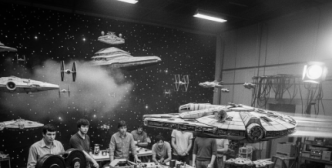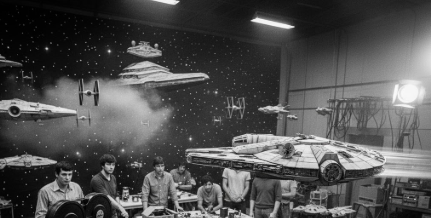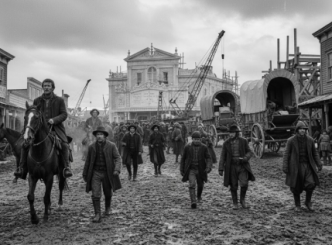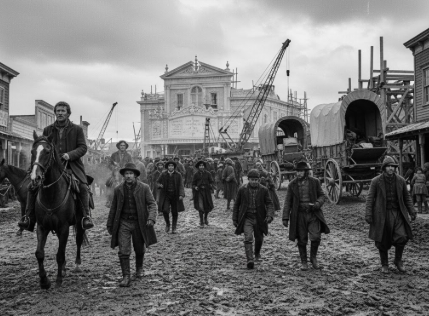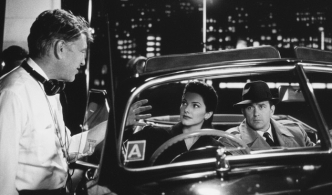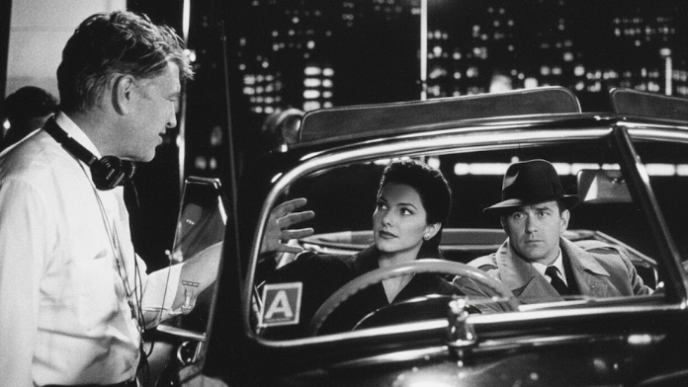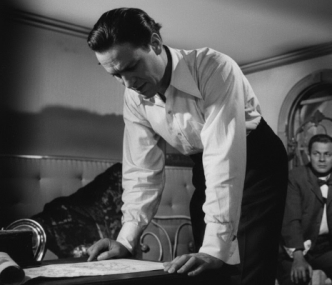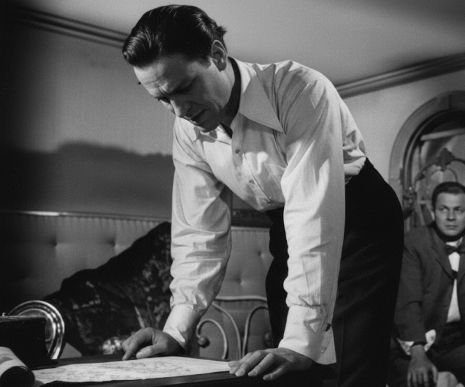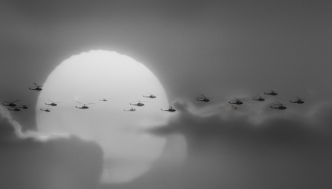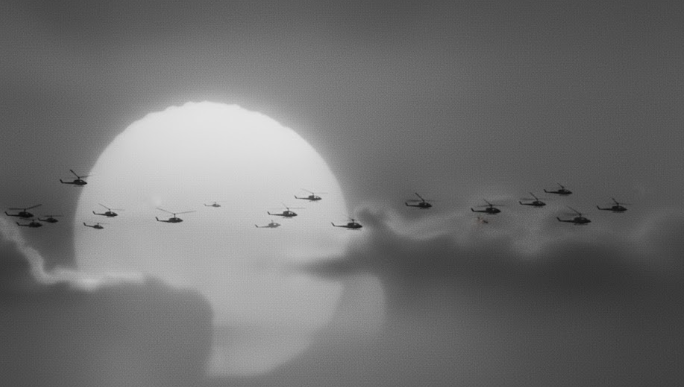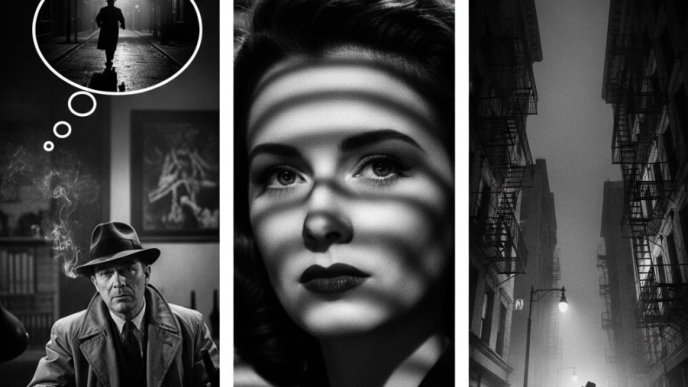Two years after Jaws taught Hollywood how to create a summer blockbuster, a young filmmaker named George Lucas took that model and launched it into hyperspace. Star Wars (1977) was more than just a movie; it was a cultural cataclysm, a cinematic phenomenon that captured the global imagination in a way nothing had before. At a time when the gritty cynicism of New Hollywood reigned, Lucas offered a heartfelt and exhilarating return to classic adventure, blending science fiction with the timeless structure of myth.
The film’s groundbreaking visual effects, its iconic score, and its unprecedented success in merchandising didn’t just build on the blockbuster template—they perfected it. Star Wars solidified the shift away from the auteur-driven dramas of the early ’70s and created a new paradigm for the industry, one built on high-concept spectacle, franchise potential, and the creation of entire universes that would dominate the box office for the next half-century.
A New Hope: Reviving Myth in a Cynical Age
The New Hollywood era was defined by its moral ambiguity and disillusionment, a direct reflection of a nation grappling with the fallout of Vietnam and Watergate. George Lucas, a product of this same film school generation, made a conscious decision to move in the opposite direction. He wanted to create a modern fairy tale, a film that would give a new generation the kind of optimistic, swashbuckling adventure he had loved as a child. Drawing inspiration from a wide array of sources—Joseph Campbell’s work on comparative mythology (The Hero with a Thousand Faces), classic Westerns, Akira Kurosawa’s samurai epics, and old Flash Gordon serials—Lucas crafted a story with a clear, unambiguous moral center: a classic struggle between good and evil.
The story of a farm boy who discovers his destiny, rescues a princess, and joins a rebellion against a tyrannical empire was a deliberate return to the archetypal “hero’s journey.” In an era of anti-heroes, Luke Skywalker was an earnest and relatable hero. The film’s unabashed sincerity and sense of wonder provided a powerful form of escapism for audiences weary of the cynicism that had come to define American cinema. It was a film that wasn’t afraid to be fun, and its optimistic spirit resonated with a public that was desperate for something to believe in.
The “Used Future”: A Revolution in Visual Effects
While the story was rooted in classicism, the film’s visual language was revolutionary. To bring his galaxy to life, Lucas founded his own visual effects company, Industrial Light & Magic (ILM), which would go on to become the industry standard-bearer. Frustrated with the static, model-on-a-string effects of previous sci-fi films, ILM pioneered a new system of motion-control photography. The Dykstraflex camera, a computer-controlled system, allowed for dynamic and repeatable camera movements around stationary models. This meant that for the first time, spaceships could be filmed with the fluid, kinetic energy of a World War II dogfight, creating thrilling and believable space battles.
Equally groundbreaking was the film’s aesthetic, which Lucas dubbed the “used future.” Unlike the sterile, pristine environments of films like 2001: A Space Odyssey, the world of Star Wars was gritty, grimy, and lived-in. Ships were dented and dirty, droids were covered in oil stains, and technology looked worn and repaired. This simple but brilliant design choice gave the fantastical universe a tangible sense of history and realism, making it feel more like a documentary of a distant galaxy than a polished work of fiction. Combined with Ben Burtt’s innovative sound design—which created iconic sounds like the hum of a lightsaber and the roar of a TIE fighter from a collage of real-world recordings—these practical effects created a completely immersive and believable world before the advent of CGI.
Building an Empire: The Birth of the Modern Franchise
If Jaws wrote the playbook for the summer blockbuster, Star Wars added the chapters on merchandising and franchising that would come to define modern Hollywood. Following the marketing model of a wide release backed by a massive advertising campaign, the film became a word-of-mouth phenomenon, with lines stretching around the block for months.
But the film’s true business innovation came from a deal Lucas struck with 20th Century Fox. In exchange for a lower salary, he retained the rights to all sequels and, crucially, all merchandising. At the time, this was seen as a minor concession by the studio. But as the film’s popularity exploded, the demand for toys, posters, and other tie-in products became a financial juggernaut, generating revenue that would eventually dwarf the film’s box office earnings. This move single-handedly created the modern model of film franchising, where the movie itself is just the first step in building a multi-billion-dollar empire of ancillary products. The film’s success, driven by its massive appeal to younger audiences, taught studios an intoxicating lesson: a single hit film could be leveraged into a perpetual revenue machine.
Conclusion: The Force That Reshaped Hollywood
Star Wars was a triumph of both art and commerce. It was a deeply personal film for George Lucas, an auteur project made on a massive scale, but its phenomenal success had the ironic effect of ending the very era of directorial freedom that had made it possible. Alongside Jaws, it proved to studios that the safest and most profitable path forward lay in high-concept, effects-driven, four-quadrant blockbusters with endless franchise potential. The era of challenging, morally complex, and often downbeat films that had defined the New Hollywood was over. A new age of spectacle had begun, and its DNA was forged a long time ago, in a galaxy far, far away.

Dario Loce is the founder and editor of Celebrimous. He is a lifelong film enthusiast and the author of several locally-published books on cinema history and analysis. His passion is deconstructing the “how” and “why” of filmmaking, from the director’s vision to the editor’s cut. When not lost in a classic film, he’s usually walking through the city, replaying scenes in his mind like unfinished stories.
